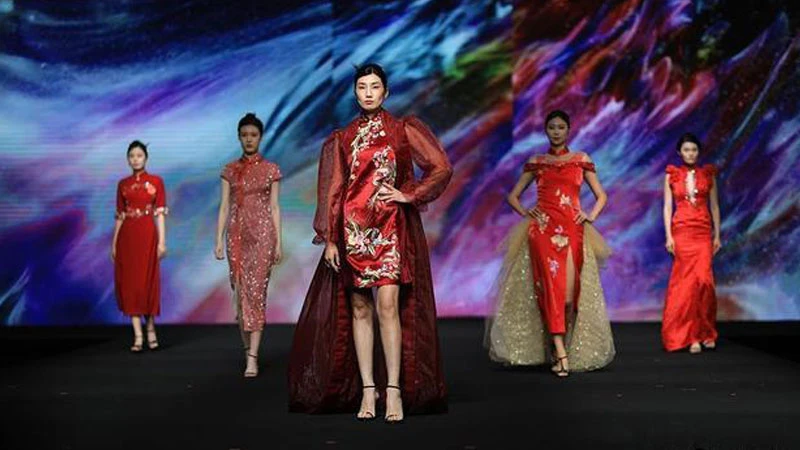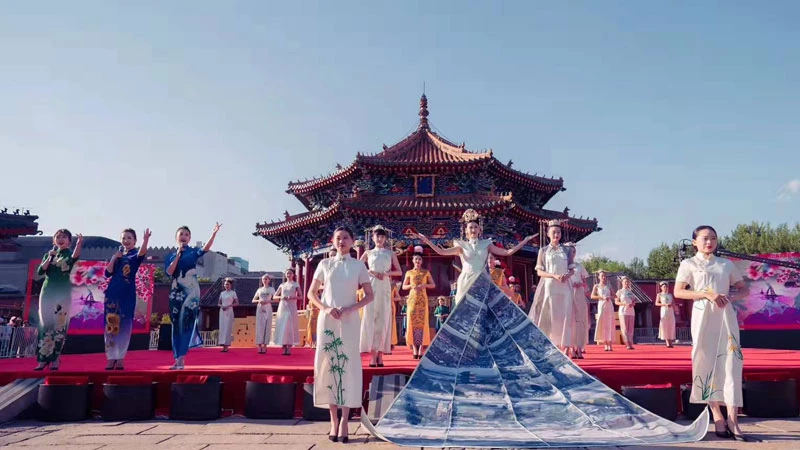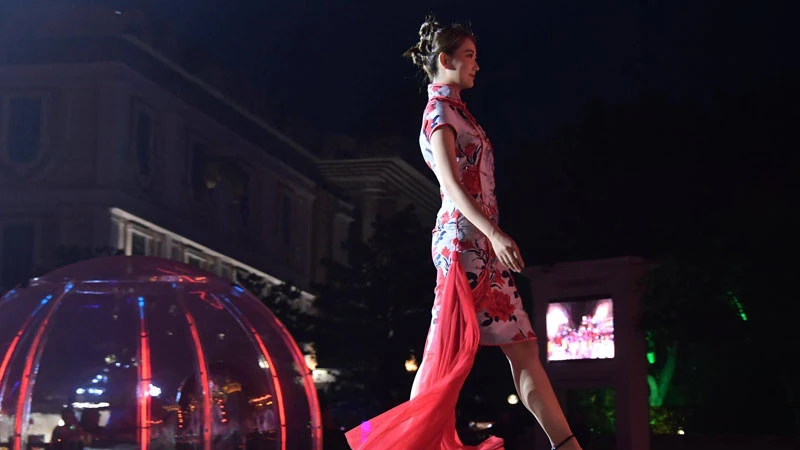In the heart of Shenyang, a city steeped in history and buzzing with modern energy, an extraordinary fusion of tradition and innovation has unfolded. The 2024 Shenyang (沈阳) Qipao Culture Week, an event that has become a hallmark of the city's cultural calendar, recently drew to a close with a breathtaking ceremony that left spectators in awe and ignited a renewed passion for this iconic garment.
The closing ceremony, held in the urban oasis of Times Wencang City Park in the Dadong (丹东) District, was a testament to Shenyang's commitment to preserving and reimagining its cultural heritage. As the graceful silhouettes of qipao-clad models glided across the stage, it became clear that this was more than just a fashion show – it was a celebration of Shenyang's soul.
Divided into three poetic chapters – "Mantingfang · Jinxiu," "Qingpingle · City Rhyme," and "Xiangjian Huan · Weiyang" – the ceremony wove together various art forms in a seamless tapestry. Dance performances like "In the Mood for Love" and "2046" paid homage to cinematic masterpieces while infusing them with the elegance of the qipao. A recitation of "You Are the April of This World" bridged the gap between traditional Chinese poetry and contemporary fashion, creating a multisensory experience that resonated deeply with the audience.

What set this year's event apart was its emphasis on the "Qipao+" concept. By intertwining the qipao with dance, poetry, drama, national trends, and pop culture, the organizers created a multidimensional showcase that appealed to a diverse audience. This approach not only highlighted the versatility of the qipao but also positioned it as a living, breathing aspect of contemporary Chinese culture rather than a relic of the past.
The involvement of local designers and brands was a particular point of pride for Shenyang. Names like Cheng Jinyiju, Gao's Qipao, and JESSIE WEN showcased their unique interpretations of the qipao, demonstrating how this traditional garment can be adapted to modern sensibilities without losing its essence. Zhang Yan, founder of the "Three Inches of Shengjing" and "Cheng Jinyiju" brands, brought his international experience to the local stage, incorporating elements of Shenyang's landscape – like the Hun River and Shenyang Imperial Palace – into his designs.
How Shenyang is Weaving Qipao into its Urban Fabric
Perhaps the most surprising and delightful moment of the ceremony came with the appearance of Wang Deshun, affectionately known as "Shenyang's Coolest Grandpa." At 88 years old, Wang's presence on the runway challenged conventional notions of age and beauty, embodying the inclusive spirit that the qipao culture week aims to promote. His participation, arranged by local designer Zhou Bo, served as a powerful reminder that cultural heritage belongs to all generations.
The success of the Shenyang Qipao Culture Week, now in its eighth consecutive year, reflects a growing trend in China's urban centers – a desire to reconnect with cultural roots while pushing the boundaries of creativity and self-expression. By focusing on the "six aspects" of conferences, exhibitions, sales, tourism, gatherings, and shows, Shenyang has created a comprehensive platform that goes beyond mere cultural preservation.
This event is not just about showcasing beautiful garments; it's about economic revitalization, tourism promotion, and city branding. The qipao has become a symbol of Shenyang's aspiration to be recognized as a city that honors its past while embracing the future. It's a strategic move that aligns with China's broader goals of cultural confidence and soft power projection.
Moreover, the inclusion of everyday citizens in the narrative of qipao culture – through short films featuring lawyers, entrepreneurs, teachers, and taxi drivers – democratizes what could otherwise be seen as an elite fashion. By highlighting how the qipao intersects with the lives of ordinary Shenyang residents, the event organizers have ensured that this cultural revival resonates with a broad cross-section of society.
As the curtain falls on this year's Qipao Culture Week, its impact lingers in the air like the trailing silk of a beautifully crafted qipao. The event has done more than showcase fashion; it has reignited a conversation about identity, heritage, and the role of traditional dress in modern society. It challenges the notion that globalization must come at the expense of local culture, instead demonstrating how the two can coexist and even enhance each other.
The success of Shenyang's Qipao Culture Week offers valuable lessons for other cities seeking to revitalize their cultural heritage. It shows that tradition, when approached with creativity and an open mind, can be a powerful force for urban renewal and community building. The qipao, once a symbol of a bygone era, has been transformed into a bridge connecting Shenyang's illustrious past with its vibrant present and promising future.
As the city continues to evolve, the image of the qipao – elegant, versatile, and uniquely Chinese – will undoubtedly play a central role in shaping Shenyang's identity on the global stage. It stands as a reminder that in the tapestry of urban life, the threads of tradition and innovation can be woven together to create something truly beautiful and enduring.


